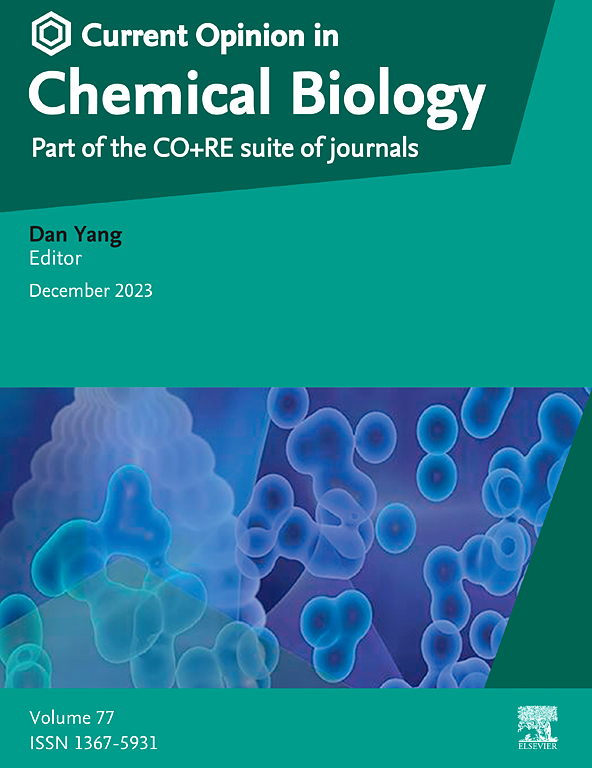将酶的特性转化为分子二氧化碳还原催化剂。
IF 6.1
2区 生物学
Q1 BIOCHEMISTRY & MOLECULAR BIOLOGY
引用次数: 0
摘要
一氧化碳脱氢酶和甲酸脱氢酶能有效催化二氧化碳还原。在这两种酶中,金属活性位点上的二氧化碳活化都得到了近似氨基酸和 Fe-S 簇的协助。在分子催化剂中,氧化还原活性配体、配体外围的酸性和带电基团以及双核支架可模拟酶的功能特征。这些成分都提高了合成系统的催化性能。最近的研究加深了人们对各种官能团对反应性的单独贡献及其综合效应的理解。新的催化剂平台揭示了二氧化碳还原的替代途径、独特的中间产物以及转换选择性的策略。我们鼓励设计更多结合不同功能元素的复合物,以进一步优化二氧化碳还原催化剂,特别是用于形成二氧化碳以外的产物。需要更多样化的双金属催化剂,以更好地利用金属与金属之间的相互作用进行二氧化碳转化。本文章由计算机程序翻译,如有差异,请以英文原文为准。
Transferring enzyme features to molecular CO2 reduction catalysts
Carbon monoxide dehydrogenases and formate dehydrogenases efficiently catalyze the reduction of CO2. In both enzymes, CO2 activation at the metal active site is assisted by proximate amino acids and Fe–S-clusters. Functional features of the enzyme are mimicked in molecular catalysts by redox-active ligands, acidic and charged groups in the ligand periphery, and binuclear scaffolds. These components have all improved the catalytic performance of synthetic systems. Recent studies impart a deeper understanding of the individual contributions of the various functionalities to reactivity and of their combined effects. New catalyst platforms reveal alternate pathways for CO2 reduction, unique intermediates, and strategies for switching selectivity. Design of a wider array of complexes that combine different functional elements is encouraged to further optimize catalysts for CO2 reduction, especially for product formation beyond CO. More diverse bimetallic catalysts are needed to better exploit metal–metal interactions for CO2 conversion.
求助全文
通过发布文献求助,成功后即可免费获取论文全文。
去求助
来源期刊

Current Opinion in Chemical Biology
生物-生化与分子生物学
CiteScore
13.30
自引率
1.30%
发文量
113
审稿时长
74 days
期刊介绍:
COCHBI (Current Opinion in Chemical Biology) is a systematic review journal designed to offer specialists a unique and educational platform. Its goal is to help professionals stay informed about the growing volume of information in the field of Chemical Biology through systematic reviews.
 求助内容:
求助内容: 应助结果提醒方式:
应助结果提醒方式:


